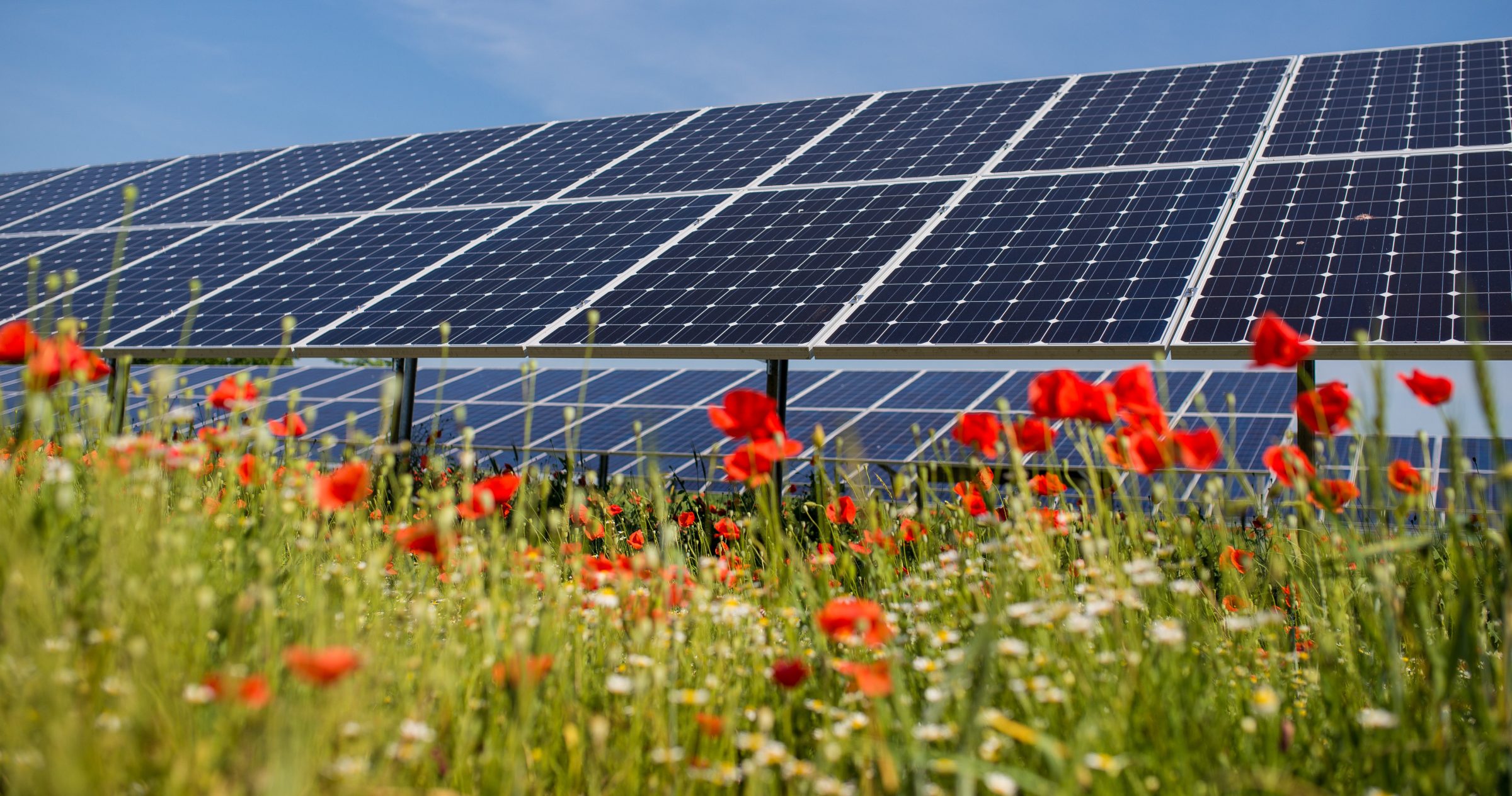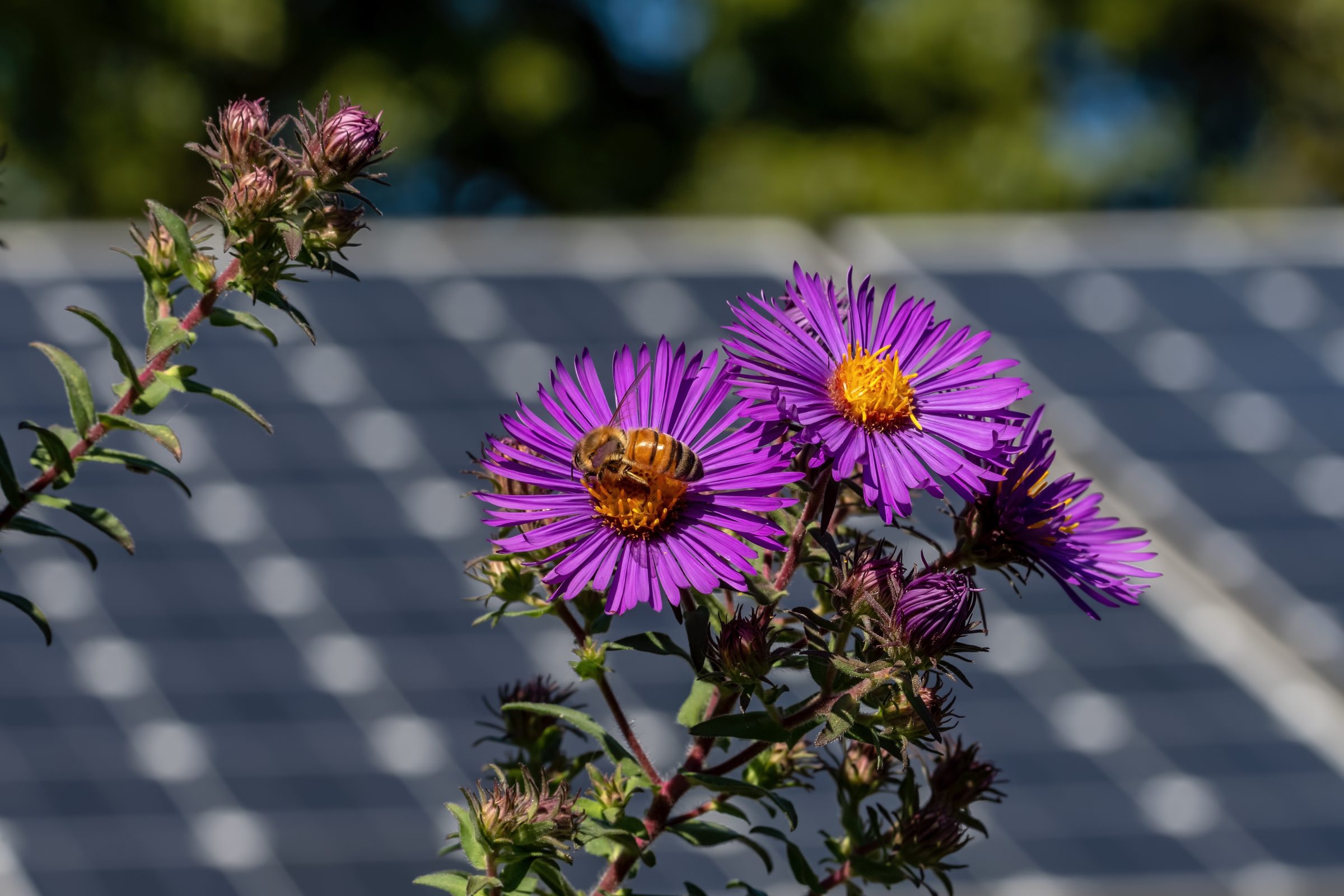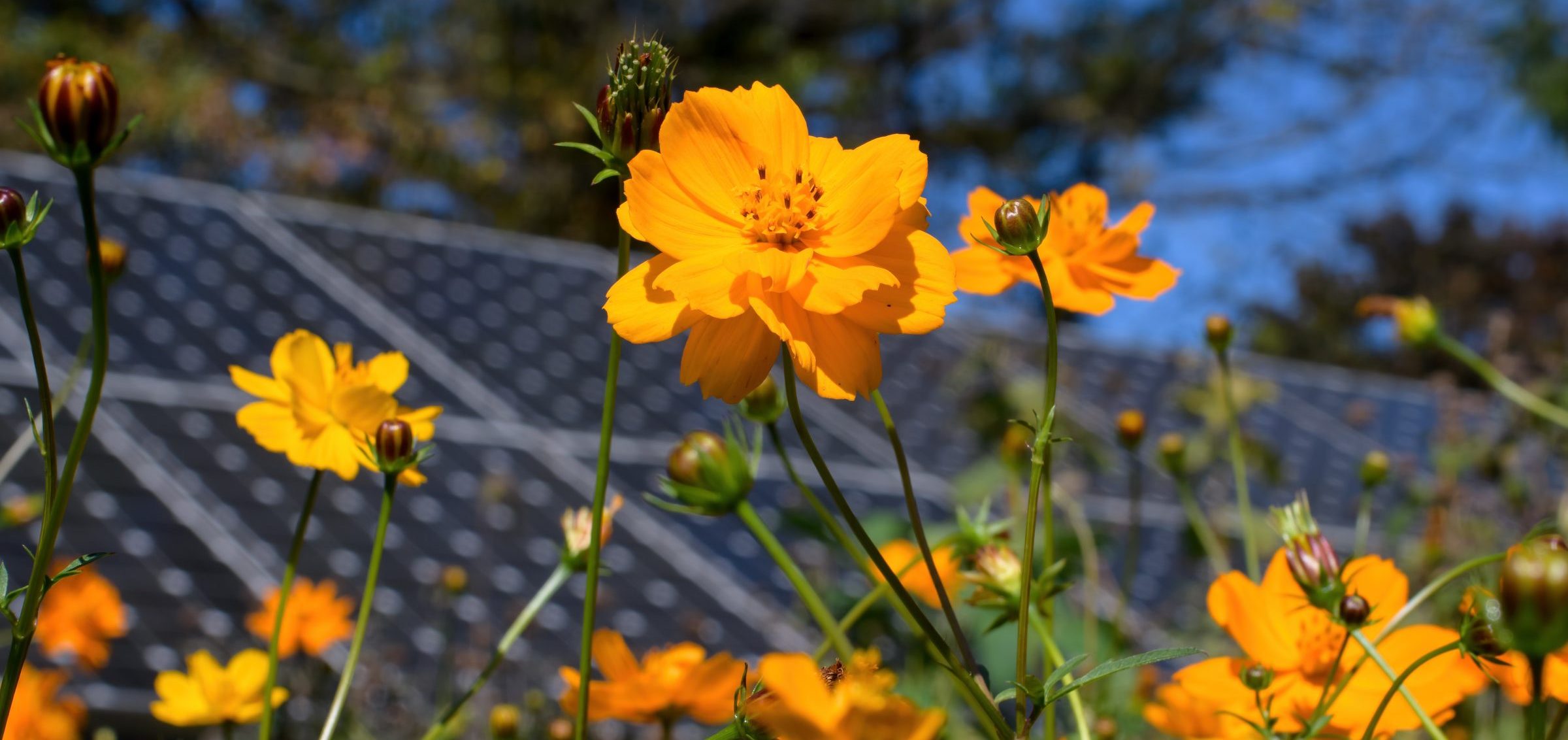Blooming Benefits: How Solar Farms Provide Vital Habitats to Pollinators

Solar farms are helping fight climate change and high energy costs as sustainable energy solutions. These large fields of solar panels harness the sun's energy, providing clean and renewable power to local communities and businesses.
Solar farms not only generate electricity, but also provide habitats for bees, butterflies, and birds, supporting biodiversity. Plus, using the land for more than one activity maximizes the space to its full potential.

Blooming Opportunities
Solar farms typically cover large areas of land, often in rural or semi-rural towns. This land, once only for farming or neglected, now offers a chance to create habitats for dedicated solely to agriculture or left unused and abandoned, now presents an opportunity to cultivate habitats that support pollinators. Solar farm operators can attract pollinators by planting native flowers around solar panels, creating diverse ecosystems that support pollinator populations.
Recently, pollinators have been forced out of their natural homes because cities are growing. Pollinators are essential for the success of approximately 35 percent of worldwide food crop production. Adding native flowering plants can play a crucial role in providing new food and shelter for pollinators.
Solar farms provide a platform to reintroduce native plant species that have been displaced. These plants not only provide nectar and pollen for pollinators but also offer shelter and nesting sites. By establishing diverse plant communities, solar farms can support a wide range of pollinator species, contributing to overall biodiversity conservation.
Pollinators are important for plants to make fruits, seeds, and nuts. By supporting pollinator populations, solar farms contribute to the resilience and health of surrounding ecosystems. Increased biodiversity can also enhance soil health, nutrient cycling, and pest control. This further strengthens the ecological services provided by solar farm landscapes.
Economic and Social Benefits
In addition to ecological benefits, supporting pollinator populations on solar farms can yield economic and social advantages. Introducing vegetation around and beneath solar panels may offer direct advantages to the system, too. Plant coverage generates a cooler microclimate around the panels, helping to potentially boost their efficiency in naturally warmer months.
Pollinator-friendly habitats can enhance the aesthetic appeal of solar installations, creating visually pleasing landscapes that benefit nearby communities. The integration of pollinator habitats into solar farm design and management also aligns with the principles of sustainable development.
By prioritizing ecological considerations alongside energy production, solar farm operators can create resilient landscapes that support both human and environmental well-being. As the global transition to renewable energy accelerates, the importance of including biodiversity conservation measures into renewable energy infrastructure becomes ever more apparent.

Our Thoughts
Solar farms provide a safe place with food and shelter for bees and otherhave the potential to serve as valuable sanctuaries for pollinators, especially in areas with high human population density. Bees and other pollinators benefit and thrive from the resources provided by solar farms.
By embracing practices that support pollinator habitats, solar farm operators can contribute to biodiversity conservation, ecosystem resilience, and the long-term sustainability of our planet. It’s important that we recognize solar farms not only as sources of clean energy but also as vibrant ecosystems as we build a more sustainable future.
Partner With Us
At Nelnet Renewable Energy, we share your passion for incorporating ecological considerations into your solar farm or commercial solar project. Learn more about our expertise, philosophy, and how we partner to ensure you achieve your goals. Contact us today!
Sources: